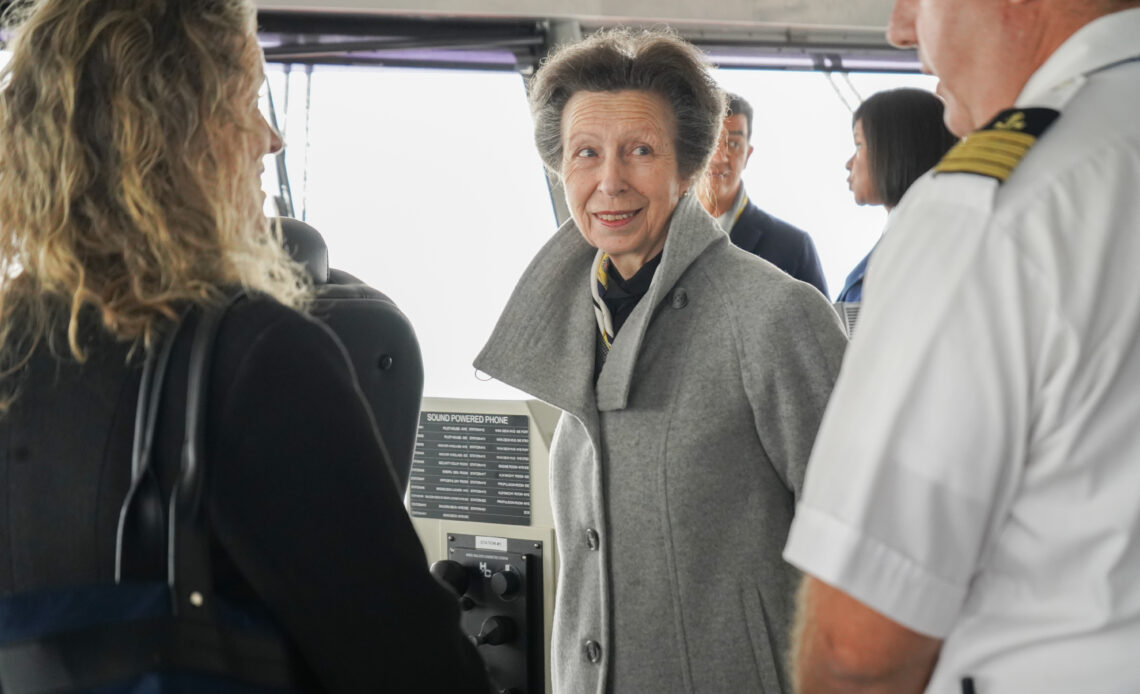
Princess Anne is about to celebrate her 75th birthday with plenty of plaudits – she’s now one of the best known and admired members of the Royal Family. However, it was only a quick move from her grandfather, King George VI, that ensured this famous princess was an HRH from birth.
In 1917, George VI’s father, King George V, had issued Letters Patent setting out who in his family could and couldn’t be an HRH. He said that all the children of a Monarch could be HRH and Prince or Princess and that the same applied to all the grandchildren of a Monarch in the male line. That meant that the children of a Monarch’s son would be HRH but not the children of a Monarch’s daughter. They, instead, would be styled according to their father’s rank.
A female heir couldn’t pass on HRH
This became a problem just thirty years later. In 1947, the heir to the throne married. However, that heir was a young woman. King George VI, who had succeeded following the abdication of his childless brother, Edward VIII, only had daughters and the elder of them, Elizabeth, was first in line to his throne. However, the 1917 Letters Patent meant that any children born of her marriage to a certain Prince Philip wouldn’t have a royal title.
Instead, they would be styled as children of a duke. So, on November 9 1948, the London Gazette published the news that King George VI had issued new Letters Patent to get round this rather strange royal dilemma. At that moment, Elizabeth was due to give birth to her first child and as things stood, the heir of their heir would have no royal title.
The London Gazette published that ”The King has been pleased by Letters Patent under the Great Seal of the Realm bearing date the 22nd ultimo to define and fix the style and title by which the children of the marriage solemnized between Her Royal Highness The Princess Elizabeth. Duchess of Edinburgh and His Royal ‘Highness Prince Philip, Duke of Edinburgh, shall be designated. It is declared by the Letters Patent that the children of the aforesaid marriage shall have and at all times hold and enjoy the style title or attribute of Royal Highness and the titular dignity of Prince or Princess prefixed to their respective Christian names in addition to any other appellations and titles of honour which may belong to them hereafter.”
The Gazette showed that the Letters Patent had been issued on October 22 and that the grandchild about to be born for King George VI would be royal. The grandchild arrived on November 14 and was known, from birth, as HRH Prince Charles.
Birth of Princess Anne
Just under two years later, Charles got a little sister. Anne Elizabeth Alice Louise arrived on August 15th 1950, born at Clarence House which was then the London home of her parents. She was HRH Princess Anne of Edinburgh at birth and third in line to the throne.
Her birth was registered in London, as required, with the baby given the surname of Windsor – later, the descendants of Elizabeth II and Prince Philip would be able to use Mountbatten-Windsor but that was still in the future. It meant that had the Letters Patent not been issued, she would have been born as Lady Anne Windsor. Her brother would, most likely, have taken his father’s secondary title and have been known as Earl of Merioneth.
Less than two years later, King George VI died and Anne’s mother became Queen Elizabeth II. At that point, the little royal became HRH The Princess Anne while her brother automatically became HRH The Prince Charles, Duke of Cornwall. He would be made Prince of Wales in 1958.
Anne received her most famous title, that of Princess Royal, in 1987 from her mother, Queen Elizabeth. However, it was thanks to her grandfather, George VI, that she began life as a princess at all.

